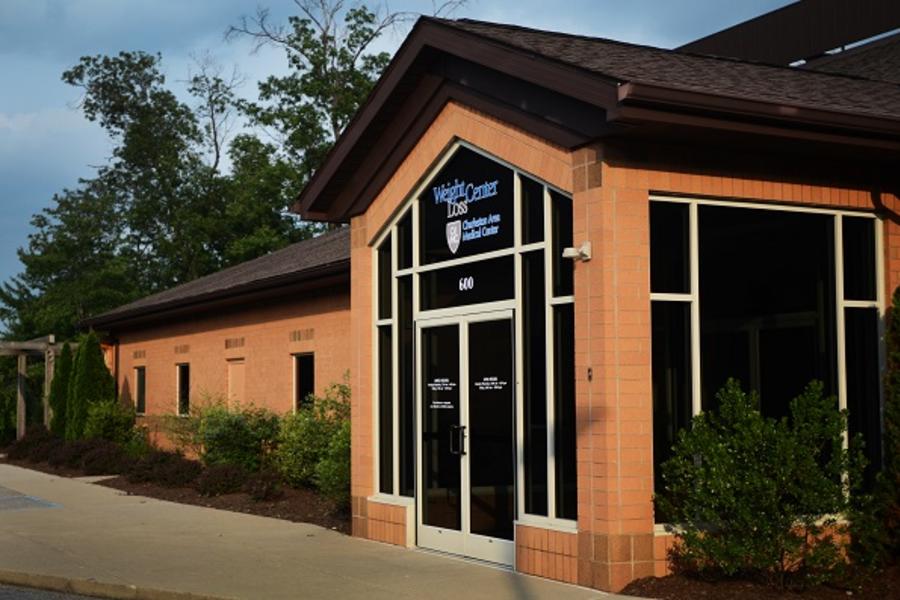How Duodenal Switch Works
The duodenum, or the first portion of the small intestine, is divided just past the outlet of the stomach. A segment of the distal (last portion) small intestine is then brought up and connected to the outlet of the newly created stomach, so that when the patient eats, the food goes through a newly created tubular stomach pouch and empties directly into the last segment of the small intestine. Roughly three-fourths of the small intestine is bypassed by the food stream.
The bypassed small intestine, which carries the bile and pancreatic enzymes that are necessary for the breakdown and absorption of protein and fat, is reconnected to the last portion of the small intestine so that they can eventually mix with the food stream. The procedure reduces the amount of food that is consumed; however, over time this effect lessens and patients are able to eventually consume near “normal” amounts of food. Unlike the other procedures, there is a significant amount of small bowel that is bypassed by the food stream.
Additionally, the food does not mix with the bile and pancreatic enzymes until very far down the small intestine. This results in a significant decrease in the absorption of calories and nutrients (particularly protein and fat) as well as nutrients and vitamins dependent on fat for absorption (fat soluble vitamins and nutrients).
Lastly, similar to the gastric bypass and sleeve gastrectomy, this surgery affects guts hormones in a manner that impacts hunger and satiety as well as blood sugar control. Therefore, it is considered to be the most effective surgery for the treatment of diabetes.
Benefits of Duodenal Switch Surgery
- Results in greater weight loss than other weight loss surgeries (60 to 70% percent excess weight loss or greater at 5-year follow up).
- Allows patients to eventually eat near “normal” meals.
- Reduces the absorption of fat by 70 percent or more.
- Causes favorable changes in gut hormones to reduce appetite and improve satiety.
- Is most effective against diabetes compared to other weight loss surgeries.
Risks of Duodenal Switch Surgery
This procedure has a longer hospital stay than other weight loss surgeries. It also has higher complication rates and risk for mortality than other weight loss procedures. It has a greater potential to cause protein deficiencies and long-term deficiencies in a number of vitamin and minerals (i.e. iron, calcium, zinc and fat-soluble vitamins such as vitamin D).
Compliance with follow-up visits and care and strict adherence to dietary and vitamin supplementation guidelines are critical to avoiding serious complications from protein and certain vitamin deficiencies.
Short-term risks include:
- Bleeding/blood loss
- Blood clots
- Infection
- Leakage (when a perforation of the stomach or a leak from anywhere the bowel is stitched together has occurred)
- Difficulty in consuming liquids immediately after surgery, due to swelling around the stomach and small bowel
- Death
Long-term risks include:
- Nutritional deficiencies
- The brittle bone disease osteoporosis, due to malabsorption of calcium and vitamin D, which are needed to maintain bone strength
- Night blindness due to malabsorption of Vitamin A
- Malabsorption of protein, leading to malnutrition (which could lead to a second operation)
- Carbs can be well absorbed, resulting in inadequate weight loss
- Chronic diarrhea
- Foul-smelling stools and gas

West Virginia’s Weight Loss Specialists
Our bariatric surgeons are experts in a variety of weight loss surgery techniques.
Am I a Candidate for Duodenal Switch Surgery?
Once you and your physician have decided on weight loss surgery, the next step is to choose the best procedure for your obesity. This is an individual decision based on many factors.
If you have a body mass index (BMI) greater than 40, you may be a candidate for the duodenal switch. Others with lower BMIs, but with obesity-related illnesses such as diabetes, may be candidates for this procedure.
Duodenal switch also may be effective for people with very high BMIs of greater than 55. A study found that the duodenal switch produced more weight loss than the Roux-en-Y gastric bypass in patients with a BMI of at least 50.
Keep in mind that this complex surgery does have more complications and may not be the right choice for certain high risk individuals, including those with heart failure and sleep apnea. Your doctor will help you decide if duodenal switch is right for you.
What To Expect - Duodenal Switch Surgery
Preparing for any weight loss surgery starts with making a lifelong commitment to the dietary and lifestyle changes necessary for success. Weight loss surgery is not a quick fix, and it is not a decision to enter into lightly.
Once you have made the decision together with your surgeon and your family members, the preoperative evaluations begin. They include:
- Meeting with a registered dietician to discuss how your diet needs to change before and after surgery.
- A comprehensive evaluation by a mental health professional.
- An upper endoscopy exam may be performed to make sure no polyps, tumors, ulcers or bacteria that cause ulcers are in the stomach prior to surgery.
- Additional pre-operative evaluations may be necessary for the heart and lungs.
- Tell your surgeon about any medications you are taking or plan to take throughout recovery. Vitamins, minerals and herbs also interact with medications, so don’t leave anything out.
Some lifestyle changes that need to start before surgery include:
- Quitting smoking for at least six to eight weeks before and after weight loss surgery. Smoking can increase the risk of complications, including potentially fatal blood clots. Smoking also increases the risk of pneumonia and other lung problems after surgery.
- Not drinking alcohol for at least 48 hours before weight loss surgery.
- Losing 5 to 10 percent of excess body weight. People who lose a moderate amount of weight before surgery have a shorter hospital stay and more rapid postoperative weight loss.
The duodenal switch operation is lengthy, often lasting three to four hours. Most people require about three to four weeks of recovery after surgery.
Part of the recovery process involves getting re-accustomed to eating solid foods. People who undergo the duodenal switch can consume only fluids immediately following surgery. From there, they will progress to pureed foods and ultimately solids.
Most weight loss occurs during the first 12 to 18 months after surgery. Based on patient averages, patients can expect to lose about 70 percent of their current weight and about 35 percent of their BMI.
The procedure may result in more nutritional deficiencies than other weight loss surgeries because of the malabsorption it causes. As a result, patients need to take nutritional supplements daily, including vitamin A, vitamin D and calcium, for the rest of their lives. Some doctors may also recommend additional supplements of potassium and iron. Lifelong nutritional follow-up is needed after duodenal switch.
Compliance with nutrition guidelines is critical, because failure to comply can lead to malnutrition and significantly unpleasant bowel changes.



